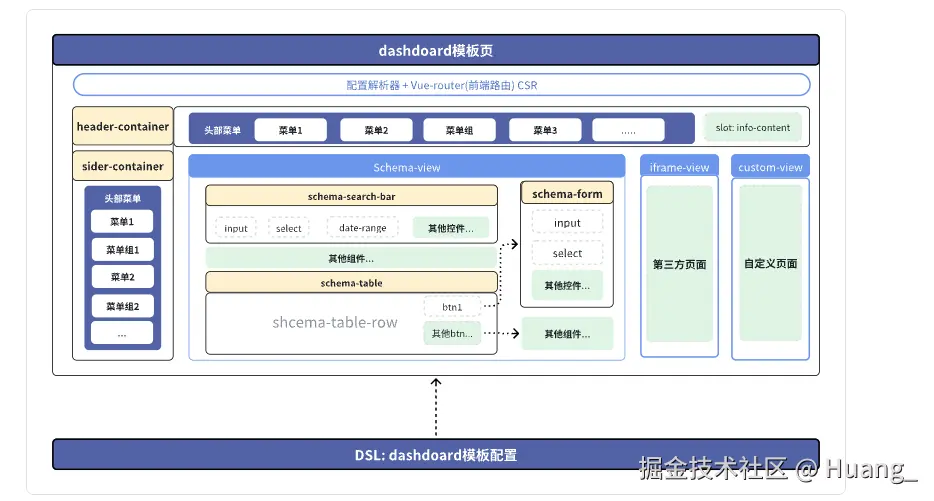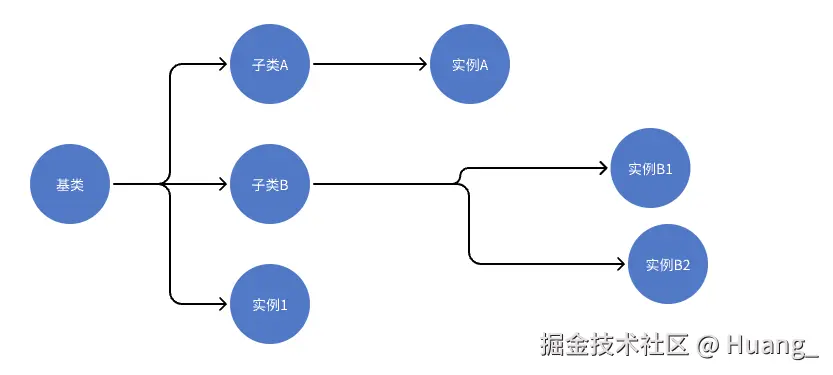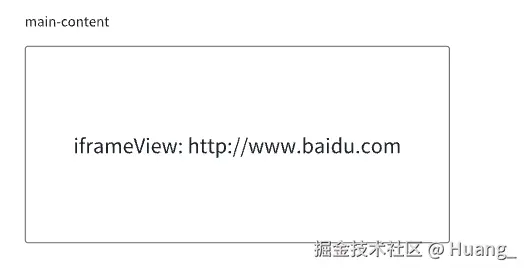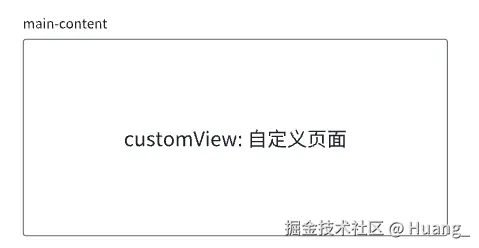前言
在当下,绝大多数的开发者在开发中后台系统,不管是前端、后端都是在干着一些CRUD的工作,绝大部分都是重复的工作,一些搜索条件、一个表格、一些按钮。看似忙碌的工作,实则对个人的提升意义不大,因为做一个跟做一百个的影响差别不大。如果能有一个可以沉淀出来可复用、支持灵活拓展的方案,那么我们就可以将重复的工作尽可能的抹平,只需要对定制化的功能进行开发,这对我们的开发效率将是一个很大的提升。下面介绍的基于领域模型的建站模式的DSL的设计与实现将实现这一想法,将80%的可复用的业务能力交给配置完成,剩余20%的内容通过定制化开发完成。
一、什么是 DSL ?
在理解什么是DSL之前,我们先了解一下什么是 领域模型。

领域模型就是解决方案。就是描述具体的某一个业务领域的抽象和简化的表示,它是针对特定领域里的关键事物以及其关联的表现,它是为了解决特定问题的抽象的模型。比如一个公司中人力资源部门、财务部门、技术部门都属于一个特定的领域,它解决了特定的问题。 总的来说,领域模型我通俗的理解是它先找到业务中的实际场景,以领域模型为中心去驱动项目的开发,精髓在于面向对象去分析,抽象事物的能力。
 DSL(Domain-Specific Language) 是一种专用于特定领域的计算机语言,设计针对某一特定领域的问题解决。通常用于描述界面布局、组件配置、和行为逻辑,以简化和加速前端开发过程。这也就要求 DSL 具备强大的配置能力,让使用者用起来更简单。DSL就是根据自定义的DSL规则来书写一份DSL脚本,也就是具体的 Schema Config 配置,里面包含了想要生成的页面内容(搜索条件、表格、按钮、弹窗、抽屉...)。
DSL(Domain-Specific Language) 是一种专用于特定领域的计算机语言,设计针对某一特定领域的问题解决。通常用于描述界面布局、组件配置、和行为逻辑,以简化和加速前端开发过程。这也就要求 DSL 具备强大的配置能力,让使用者用起来更简单。DSL就是根据自定义的DSL规则来书写一份DSL脚本,也就是具体的 Schema Config 配置,里面包含了想要生成的页面内容(搜索条件、表格、按钮、弹窗、抽屉...)。
二、如何设计 DSL ?
 上面是一份 mode 为 dashborad 的 DSL 配置(根据业务可以由很多mode不一样的配置),这一份配置用来生成对应的页面。生成的页面设计图如下:
上面是一份 mode 为 dashborad 的 DSL 配置(根据业务可以由很多mode不一样的配置),这一份配置用来生成对应的页面。生成的页面设计图如下:

三、如何书写 DSL?
根据上面的设计,我们一份DSL的设计是生成一份中后台的系统,他的颗粒度是一个站点,而不是一个模块或者一个页面。这时候问题就来了,如果我们有多个站点,比如拼多多电商系统、淘宝电商系统、京东电商系统,那么我们就需要三份DSL配置,而且其中大部分的配置都是相同,这样的话,我们目标解决80%重复的工作提升的并没有想象中的极致。这只是由原来重复的书写页面变成重复的配置,依然会有大量的时间浪费。如下图所示一样。
 基于上面的问题,我们可以知道三份配置只有一小部分的字段属性可能不一样,一部分还是一样的配置。我们思考一下,能不能将重复的配置抽象出来,不一样的配置由各自的项目配置去实现呢?这就需要借助面向对象的思想了。面向对象的三大特征:封装、继承、多态。
基于上面的问题,我们可以知道三份配置只有一小部分的字段属性可能不一样,一部分还是一样的配置。我们思考一下,能不能将重复的配置抽象出来,不一样的配置由各自的项目配置去实现呢?这就需要借助面向对象的思想了。面向对象的三大特征:封装、继承、多态。

 最终设计呈现:
最终设计呈现:

四、具体实现
3.1 文件结构

3.2 子类继承基类的实现
js
const _ = require("lodash");
const glob = require("glob");
const path = require("path");
const { sep } = path;
/**
* project 继承 model 的方法
* @param {object} model
* @param {object} project
*/
const projectExtendModel = (model, project) => {
return _.mergeWith({}, model, project, (modelValue, projValue) => {
// 处理数组合并的特殊情况
if (Array.isArray(modelValue) && Array.isArray(projValue)) {
let result = [];
// 如果 project 有的键值, model 也有 --> 修改(重载)
// 如果 project 没有的键值,model有 --> 则继承
for (let i = 0; i < modelValue.length; i++) {
const modelItem = modelValue[i];
const projItem = projValue.find(projItem => projItem.key === modelItem.key);
result.push(!projItem ? modelItem : projectExtendModel(modelItem, projItem));
}
// 如果是 project 有的键值,model 没有 --> 新增
for (let i = 0; i < projValue.length; i++) {
const projItem = projValue[i];
const modelItem = modelValue.find(modelItem => modelItem.key === projItem.key);
if (!modelItem) {
result.push(projValue[i]);
}
}
return result;
}
})
}
/**
* 解析 model 配置,并返回组织且继承 model 之后的数据节后
* [{
* model: ${model},
* project: {
* proj1Key: ${proj1},
* proj2Key: ${proj2}
* }
* }, ...]
*/
module.exports = (app) => {
// 存储组织之后的数据
const modelList = [];
// 获取 model 目录
const modelPath = path.resolve(app.baseDir, `.${sep}model`);
// 获取 model 下面的所有文件
const fileList = glob.sync(path.resolve(modelPath, `.${sep}**${sep}**.js`));
fileList.forEach(file => {
// file = path.resolve(file);
// 如果 file 是当前目录的话,就不处理
if (file.indexOf('index.js') > -1) {
return;
}
// 如果不是,区分 model 和 project
// 在 windows 中 glob 会将 \ 转为 /, 所以直接用 / 来判断
const type = file.indexOf(`/project/`) > -1 ? "project" : "model";
// 如果是 model
if (type === 'model') {
const modelKey = file.match(/\/model\/(.*?)\/model\.js/)?.[1];
let modelItem = modelList.find(item => item?.model?.key === modelKey);
// 如果 modelItem 不存在,则创建一个
if (!modelItem) {
modelItem = {};
modelList.push(modelItem);
}
modelItem.model = require(path.resolve(file));
// 注入 modelKey
modelItem.model.key = modelKey;
}
// 如果是 project
if (type === "project") {
const modelKey = file.match(/\/model\/(.*?)\/project\//)?.[1];
const projKey = file.match(/\/project\/(.*?)\.js/)?.[1];
let modelItem = modelList.find(item => item?.model?.key === modelKey);
// 如果 modelItem 不存在,则创建一个
if (!modelItem) {
modelItem = {};
modelList.push(modelItem);
}
// 如果 modelItem.project 不存在,则创建一个
if (!modelItem.project) {
modelItem.project = {};
}
modelItem.project[projKey] = require(path.resolve(file));
// 注入 projKey
modelItem.project[projKey].key = projKey;
// 注入 modelKey
modelItem.project[projKey].modelKey = modelKey;
}
});
// 数据结构进一步组织, project 继承 model 的公共模块
modelList.forEach(item => {
const { model, project } = item;
for (const key in project) {
project[key] = projectExtendModel(model, project[key]);
}
});
return modelList;
};4.3 页面实现
4.3.1 入口准备
当我们通过子类继承基类之后,我们就得到了不同站点的具体的schema配置,接下来就是需要将配置的内容转化为页面。 首页结构:
js
<template>
<!-- 全局配置国际化 -->
<el-config-provider :locale="zhCn">
<header-view
:proj-name="projName"
@menu-select="onMenuSelect"
>
<template #main-content>
<router-view />
</template>
</header-view>
</el-config-provider>
</template>4.3.2 headerView
headerView 主要负责头部菜单的实现,同时为用户预留定制化的空间。主要有三部分内容,如下图所示:
 具体实现:
具体实现:
js
// header-view
<header-container :title="projName">
<!-- 菜单插槽 -->
<template #menu-content>
<!-- 根据 menuList 渲染 -->
</template>
<!-- 设置区域插槽 -->
<template #setting-content>
<!-- 根据 projectList 渲染 -->
</template>
<!-- 主要内容插槽 -->
<template #main-content>
<slot name="main-content" />
</template>
</header-container>
// header-container
<template>
<!-- 布局容器 -->
<el-container class="container">
<!-- 头部区域 -->
<el-header class="header-container">
<el-row class="header-row">
<!-- 左上角:logo、项目标题区域 -->
</el-row>
<!-- 插槽:中间菜单区域 -->
<slot name="menu-content" />
<!-- 右上方用户信息区域 -->
<el-row
align="middle"
justify="end"
class="setting-panel"
>
<!-- 插槽:设置区域 -->
<slot name="setting-content" />
</el-row>
</el-row>
</el-header>
<!-- 内容区域 -->
<el-main class="main-container">
<!-- 插槽:核心内容区域 -->
<slot name="main-content" />
</el-main>
</el-container>
</template>4.3.3 siderView
moduleType === sider ,实现类似headerView
js
{
key: "data",
name: "数据分析",
menuType: "module",
moduleType: "sider",
siderConfig: {
menu: [{
key: "analysis",
name: "电商罗盘",
menuType: "module",
moduleType: "custom",
customConfig: {
path: "/todo"
}
}]
4.3.4 iframeView
moduleType === iframe
js
{
key: "shop-data",
name: "店铺数据",
menuType: "module",
moduleType: "iframe",
iframeConfig: {
path: "https://www/baidu.com"
}
},
4.3.5 customView
js
{
key: "analysis",
name: "电商罗盘",
menuType: "module",
moduleType: "custom",
customConfig: {
path: "/todo"
}
}
4.3.6 schemaView
schemaView 主要通过一份jsonschema的配置渲染出来main-content的内容,下面是一份schemaConfig的配置:
js
schemaConfig: {
api: "/api/proj/product",
schema: {
type: "object",
properties: {
product_id: {
type: "string",
label: "商品ID",
tableOption: {
// width: 180,
"show-overflow-tooltip": true
},
searchOption: {
comType: "input"
}
},
product_name: {
type: "string",
label: "商品名称",
tableOption: {
// width: 180
},
searchOption: {
comType: "input",
}
},
price: {
type: "number",
label: "价格",
tableOption: {
// width: 120
}
},
inventory: {
type: "number",
label: "库存",
tableOption: {
// width: 120
}
},
status: {
type: "status",
label: "状态",
tableOption: {
// width: 120
// enum: { 1: '上架', 0: '下架' }
},
searchOption: {
comType: "dynamicSelect",
// enumList: [{ value: 1, label: "上架" }, { value: 0, label: "下架" }],
api: '/api/proj/status_enum'
}
},
create_time: {
type: "string",
label: "创建时间",
tableOption: {
// width: 180
},
searchOption: {
comType: "dateRange"
}
},
create_person: {
type: "string",
label: "创建人",
tableOption: {
// width: 120
}
},
},
},
tableConfig: {
headerButtons: [{
type: "primary",
plain: true,
label: "新增",
eventKey: "addShowComponent",
eventOption: {},
}],
rowButtons: [{
type: "warning",
label: "修改",
eventKey: "editShowComponent",
eventOption: {}
}, {
type: "danger",
label: "删除",
eventKey: "remove",
eventOption: {
params: {
product_id: "schema::product_id"
}
}
}]
}
}schemaConfig 渲染逻辑,上面的 schemaConfig 只是生成了schema-search-bar、schema-table以及一些动态组件(即search-bar 的输入框、选择框、时间选择器...)。
 schemaConfig的解析器通过书写一份 schema hooks 来解析不同 option 的schema,并将处理后的 option 提供给 schema-view 解析使用
schemaConfig的解析器通过书写一份 schema hooks 来解析不同 option 的schema,并将处理后的 option 提供给 schema-view 解析使用
js
import { ref, watch, onMounted, nextTick } from "vue";
import { useRoute } from "vue-router";
import { useMenuStore } from "$store";
import { cloneDeep } from "lodash";
export const useSchema = () => {
const route = useRoute();
const menuStore = useMenuStore();
const { sider_key: siderKey, key } = route.query;
const api = ref("");
const tableSchema = ref({});
const tableConfig = ref({});
const searchSchema = ref({});
const searchConfig = ref({});
onMounted(()=> {
buildData();
});
watch([
() => key,
() => siderKey,
() => menuStore.menuList,
], () => {
buildData();
}, { deep: true });
// 构造 schema 相关配置,返回给 schema-view 解析使用
const buildData = () => {
const menuItem = menuStore.findMenuItem({
key: "key",
value: siderKey ?? route.query.key
});
if (menuItem?.schemaConfig) {
const { schemaConfig: sConfig } = menuItem;
api.value = sConfig?.api ?? "";
const configSchema = cloneDeep(sConfig?.schema ?? {});
tableSchema.value = {};
tableConfig.value = undefined;
searchSchema.value = {};
searchConfig.value = undefined;
nextTick(() => {
// 构造 tableSchema 和 tableConfig
tableSchema.value = buildSchemaDto(configSchema, "table");
tableConfig.value = sConfig.tableConfig;
// 构造 searchSchema 和 searchConfig
const schemaDto = buildSchemaDto(configSchema, "search");
for (const key in schemaDto.properties) {
if (route.query[key] !== undefined) {
schemaDto.properties[key].option.default = route.query[key];
};
};
searchSchema.value = schemaDto;
searchConfig.value = sConfig.searchConfig;
});
};
};
/**
* 通用构建 schema 方法
* 只返回需要的 schema 信息
* @param {object} _schema
* @param {string} comName
*/
const buildSchemaDto = (_schema, comName) => {
if (!_schema?.properties) {
return {};
};
const schemaDto = {
api: "",
properties: {}
};
// 提取有效的 schema 信息(清除杂质)
for (const key in _schema.properties) {
const props = _schema.properties[key];
if (props[`${comName}Option`]) {
let propsDto = {};
// 提取 props 中的非 option 的属性,存储到 propsDto 中
for (const pKey in props) {
// 如果属性不包含Option, 则添加到 propsDto 中
if (pKey.indexOf("Option") === -1) {
propsDto[pKey] = props[pKey];
};
};
// 处理 `${comName}Option` 中的信息,将其属性统一处理成 option, 存储到 propsDto 中
propsDto = Object.assign({}, propsDto, { option: props[`${comName}Option`] });
schemaDto.properties[key] = propsDto;
}
};
return schemaDto;
};
return {
api,
tableSchema,
tableConfig,
searchSchema,
searchConfig
};
};这份schema不仅仅是上面样例的功能,它还可以配置不同站点同一模块的schema在API的对应字段属性,请求方法。还可以通过这份schema生成库表,描述属性在库表的字段等等。随着业务的进行,这份schema会越来越强大,覆盖的场景越来越多。这也就解决我们开头说的磨平80%的重复的工作,剩余20%定制化。
学习声明 :本文知识体系来源于
哲玄前端(抖音ID:44622831736)大前端全栈实践课程,结合个人学习实践进行整理。